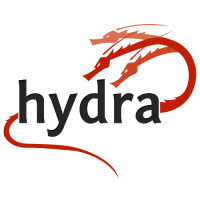 Those who have been paying attention to the cutting edge of digital libraries no doubt know about the Hydra project headed up by Stanford. Hydra is a digital repository system that is built using Ruby and is designed to accept the full range of digital object types that a large research library must manage. Built on top of Fedora and Solr, with Blacklight as the default front-end, one doesn’t normally associate ease of installation with a stack like that. Heck, you could spend a week just getting all of the dependencies installed, configured, and up and running.
Those who have been paying attention to the cutting edge of digital libraries no doubt know about the Hydra project headed up by Stanford. Hydra is a digital repository system that is built using Ruby and is designed to accept the full range of digital object types that a large research library must manage. Built on top of Fedora and Solr, with Blacklight as the default front-end, one doesn’t normally associate ease of installation with a stack like that. Heck, you could spend a week just getting all of the dependencies installed, configured, and up and running.
So color me surprised when it was announced that the Digital Public Library of America, Stanford University, and the Duraspace organization announced that IMLS had awarded them a $2 million National Leadership Grant to develop “Hydra-in-a-Box”. Just as it sounds, the goal is to “build, bundle, and promote a feature-complete, robust digital repository that is easy to install, configure, and maintain—in short, a next-generation digital repository that will work for institutions large and small, and is capable of running as a hosted service.”
That is no small goal, and a laudable one at that. But…gosh. What a distance there is to travel to get there. The project has it pegged at 30 months, so nearly three years. That sounds about right, and so far Tom Cramer has built one of the most broad-based coalitions I’ve seen in academic libraries around Hydra, so you won’t find me betting against him. Especially since he just landed $2 million to help him build out his pet project. So as much as it pains this Cal Bear to say it, Go Stanford!


Thanks for helping spread the good word about Hydra, and the Hydra-in-a-Box initiative. We hope it will not only open up the “Hydrasphere” to many more contributors and adopters, but also accelerate the rate of enhancements to Hydra’s already impressive suite of functionality.
Thanks especially for the nod to the Hydra community and its coalition of Partners, as I fear the emphasis on any single individual or institution is misplaced. Like our Hydra namesake, we have many, many heads, and the magic of Hydra is we keep acquiring new leaders–both individuals and institutions–as the project grows.
Hydra has been from the very beginning a distributed partnership, and its greatest asset is the array of talent and energy that the Partners and other contributors have committed to the effort–everything from its vision to its architecture, code, data models, advocacy and administration.
And now with IMLS’s help, DPLA, DuraSpace and Stanford are eagerly looking forward to engaging with the full Hydra community to meet the ambitious goals laid out in the project plan, and improve our collective ability to manage digital assets. As the project motto states, “if you want to go far, go together.”
As Tom has stated, thanks for highlighting the success of the IMLS bid and the collaboration that has pulled this together. Everyone in the Hydra community is very excited by this development, and, acknowledging the specific partners carrying out the work, will be assisting our Hydra colleagues as we can throughout the process. There have been other funded initiatives led by different Hydra partners announced in recent months (e.g., the HydraDAM2 project funded by the NEH). Key to these has been the willingness of different partners to take the lead, and work with others with a common interest.
We have been fortunate at the University of Hull in the UK to have been involved in Hydra as a founding Partner since its inception in 2008. It has always been, and continues to be, an international collaboration. The joy of working with the Hydra community is the willingness of everyone to contribute what they can to the greater whole. We have much to do still, but a great willingness to do it together.